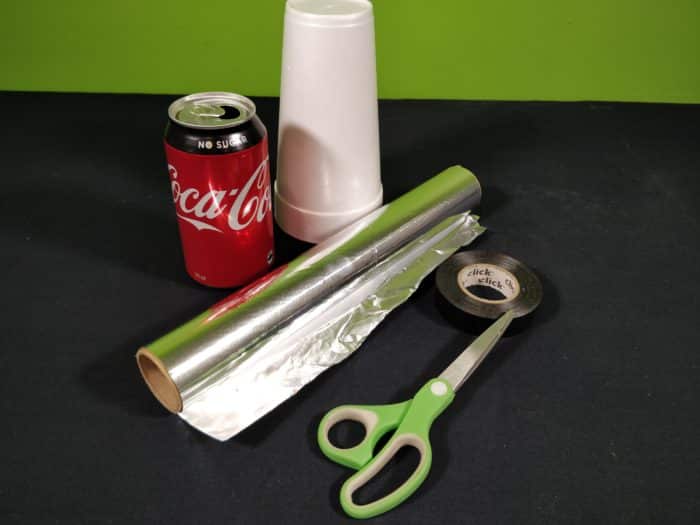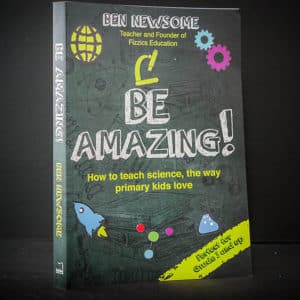You will need:
- One empty Soda Can
- Insulation Tape
- One Styrofoam Cup
- Aluminium Foil
- Scissors
- Adult supervision


Get the Electricity & Magnetism Unit of Work here!
- How does electricity actually flow?
- What makes magnets become magnetic?
- Why is there electromagnetism and what does this tell us about electricity & magnetism?
- From series & parallel circuits to conductors & insulators, there’s a lot to explore & learn!
Includes cross-curricular teaching ideas, student quizzes, a sample marking rubric, scope & sequences & more.

School science visits since 2004!
– Curriculum-linked & award-winning incursions.
– Over 40 primary & high school programs to choose from.
– Designed by experienced educators.
– Over 2 million students reached.
– Face to face incursions & online programs available.
– Early learning centre visits too!
Why Does This Happen?
Like charges repel each other, opposite charges attract each other. As you rub the electroscope, electrical charges from the Aluminium can come down to the Aluminium foil leaves, which then repel each other as they have the same charge, either positive or negative.
As you put this near other statically charged objects (e.g. a TV), the charge strips will move, depending on whether the aluminium strips are attracted or repelled to the appliance. You can tell whether the static from an appliance is positively charged or negatively charged. If an object with the opposing charge is brought near the electroscope, the strips of Aluminium leaves will hang straight down. The strips no longer repel each other because the charge has been discharged.
The electroscope can also be charged by electrostatic induction. If you bring a charged object near the electroscope this will make the leaves also diverge, as the electric field of the object causes the charges in the electroscope rod to separate.
Variables to test
- How thick can the strips of foil be before it doesn’t work?
- What happens if the soda can is still wet inside?
- Can you attach the can to a metal, ceramic, plastic or glass cup instead?
Create a Buzz!
Years 3 to 6
Maximum 30 students
Workshop or show (NSW & VIC)
60 or 90 minutes
Online Class Available
STEM Full Day Accelerator - Primary
Designed from real classroom experiences, this modular day helps you create consistently effective science learning that directly address the new curriculum with easily accessible and cost-effective materials.































this website is good\
Thanks so much Bob!
yeah thanks bob
Hi I think this will be fun for a projec
It is!